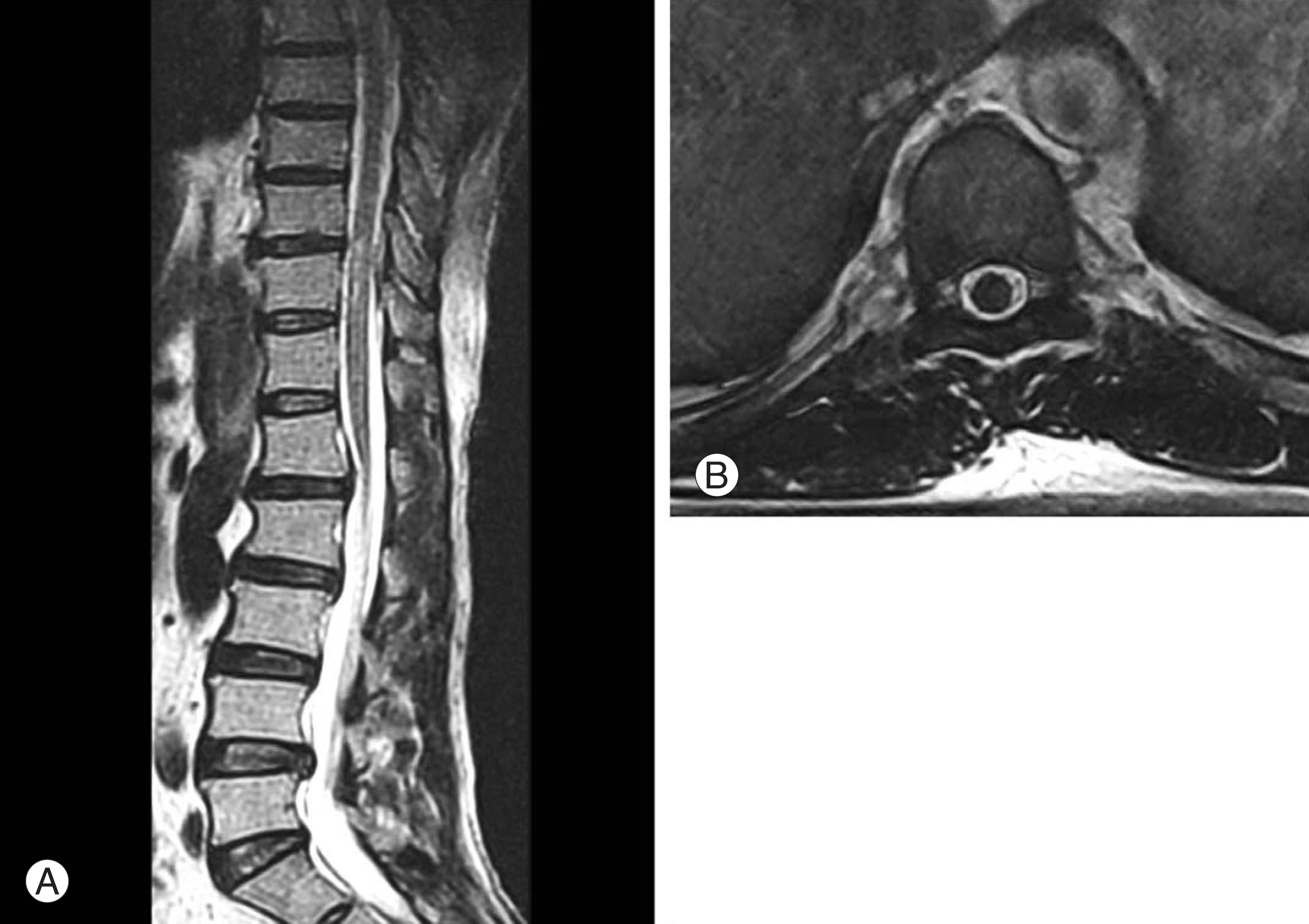J Korean Soc Spine Surg.
2006 Dec;13(4):319-322.
Conservative Treatment of Spontaneous Spinal Epidural Hematoma: A Case Report
- Affiliations
-
- 1Department of Orthopaedic Surgery, School of Medicine, Wonkwang University, Iksan, Korea. llwind@hanmail.net
Abstract
- A spontaneous spinal epidural hematoma (SSEH) is a rare disease that accompanies severe axial pain in the spine with various levels of paralysis depending on the location of the hematoma. A SSEH is mainly caused by a coagulating disorder or anticoagulants medication, while certain cases relate this disease with spinal inflammatory conditions. The early diagnosis of a SSEH is important for its treatment. Most cases with neurologic symptoms can be treated with a immediate laminectomy and decompression. If the neurologic symptoms improves within 12 hours, a conservative treatment is effective, however few cases have been reported. We encountered a 59 years old male without a prior medical history suffering from severe back pain and paraplegia due to a SSEH at thoracic vertebrae. The patient was successfully treated conservatively. We report this case with a review of the relevant literature.
MeSH Terms
Figure
Reference
-
1). Jackson R. Case of spinal apoplexy. Lancet. 1869; 2:5–6.
Article2). Chung HI, Yim MB, Byun IS, Kim IH. Spontaneous spinal epidural hematoma. J Korean Neurosurg Soc. 1978; 7:145–150.
Article3). Binder DK, Sonne DC, Lawton MT. Spinal Epidural Hematoma. Neurosurgery Quarterly. 2004; 14:51–59.
Article4). Wittebol MC, van Veelen CW. Spontaneous spinal epidural haematoma. Etiological considerations. Clin Neurol Neurosurg. 1984; 86:265–270.5). Groen RJ, van Alphen HA. Operative treatment of spontaneous spinal epidural hematomas: A study of the factors determining postoperative outcome. Neurosurgery. 1996; 39:494–508.
Article6). Lawton MT, Porter RW, Heiserman JE, Jacobowitz R, Sonntag VK, Dickman CA. Surgical management of spinal epidural hematoma: Relationship between surgical timing and neurological outcome. J Neurosurg. 1995; 83:1–7.
Article7). Wagner S, Forsting M, Hacke W. Spontaneous resolution of a large spinal epidural hematoma: Case report. Neurosurgery. 1996; 38:816–818.
Article8). Duffill J, Sparrow OC, Millar J, Barker CS. Can spontaneous spinal epidural haematoma be managed safely without operation? A report of four cases. J Neurol Neurosurg Pychiatry. 2000; 69:816–819.
Article9). Lovblad KO, Baumgartner RW, Zambaz BD, Remon-da L, Ozdoba C, Schroth G. Nontraumatic spinal epidural hematomas. MR features. Acta Radiol. 1997; 38:8–13.10). Zuccarello M, Scanarini M, D'Avella D, Andrioli GC, Gerosa M. Spontaneous spinal extradural hematoma during anticoagulant therapy. Surg Neurol. 1980; 14:411–413.
- Full Text Links
- Actions
-
Cited
- CITED
-
- Close
- Share
- Similar articles
-
- Spontaneous Lumbar Spinal Epidural Hematoma without Rist Factors: A Case Report
- Recurrent Cervical Spontaneous Spinal Epidural Hematoma with Conservative Management: A Case Report
- Acute Spontaneous Cervical Spinal Epidural Hematoma with Spontaneous Resolution: A Case Report
- Spontaneous Spinal Epidural Hematoma
- Surgical Treatment of Spontaneous Spinal Epidural Hematoma: A Case Report



